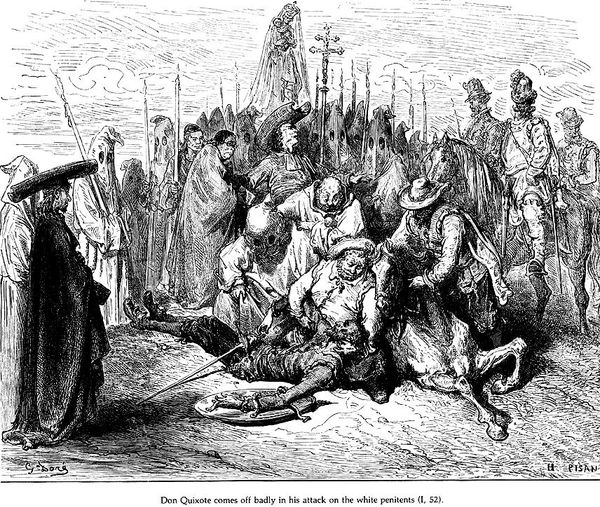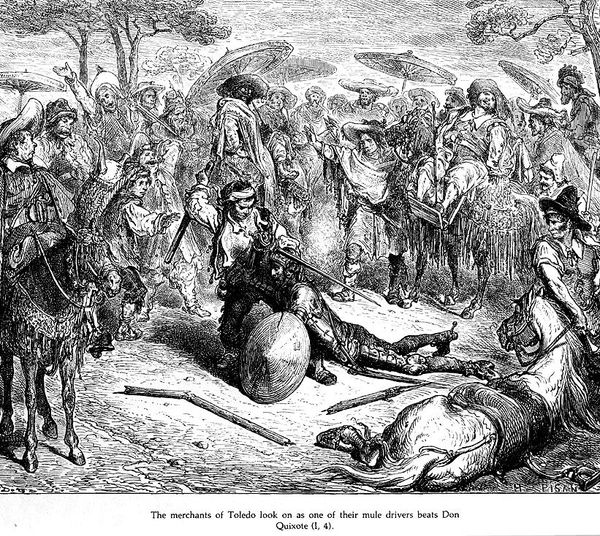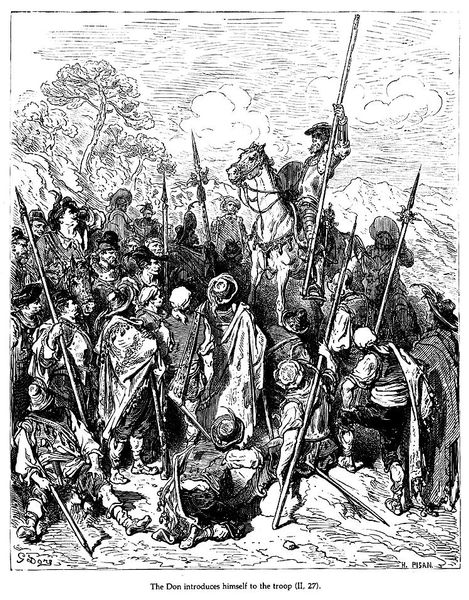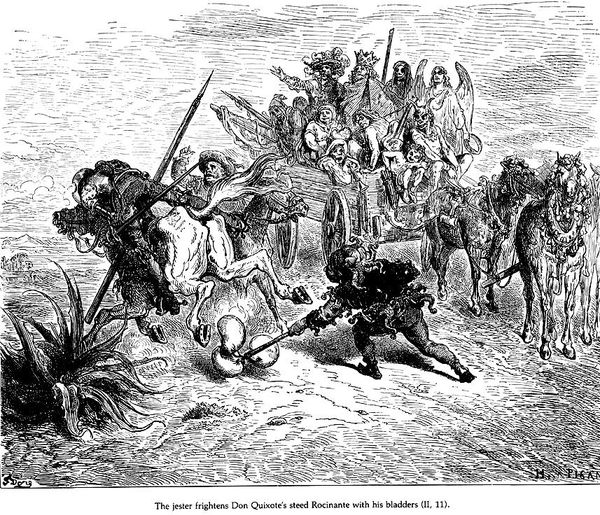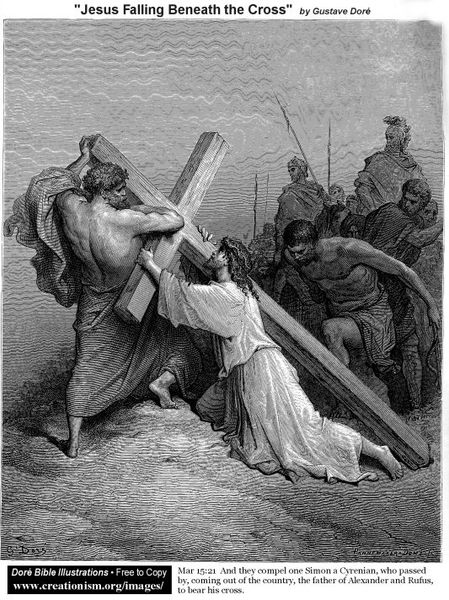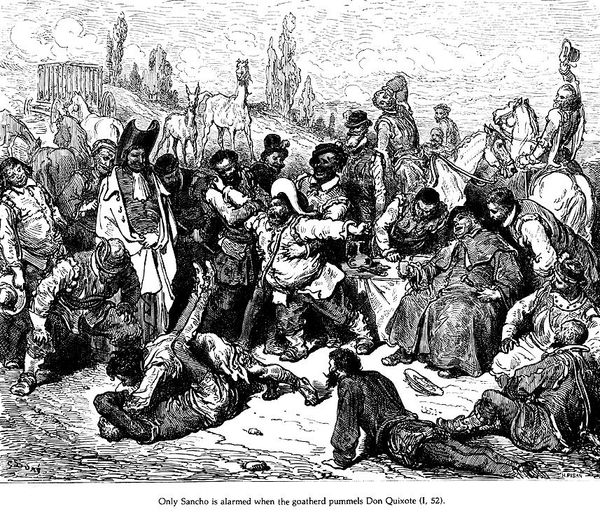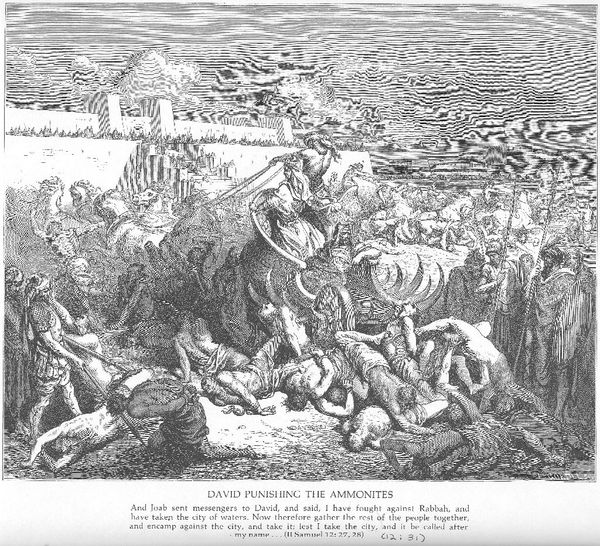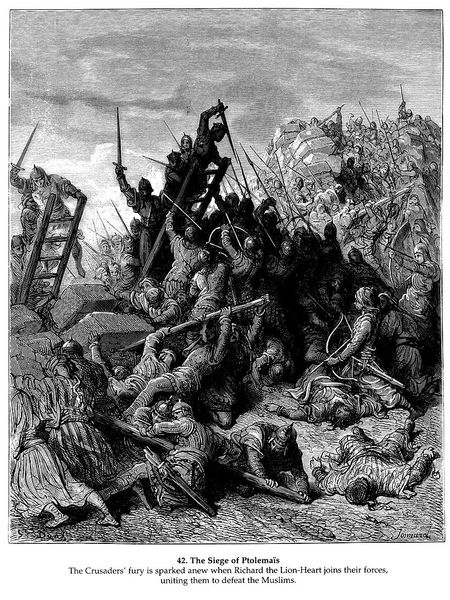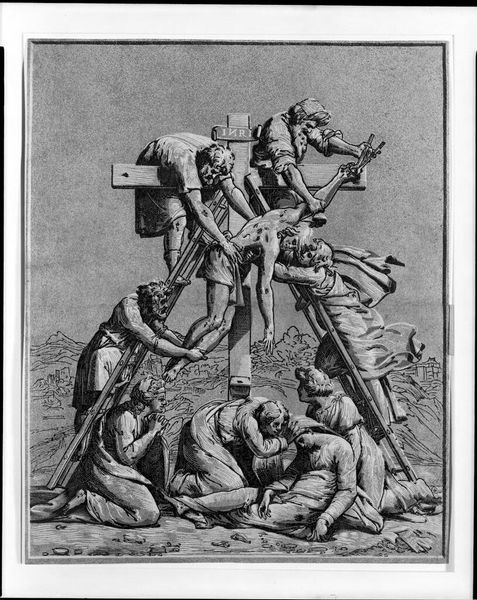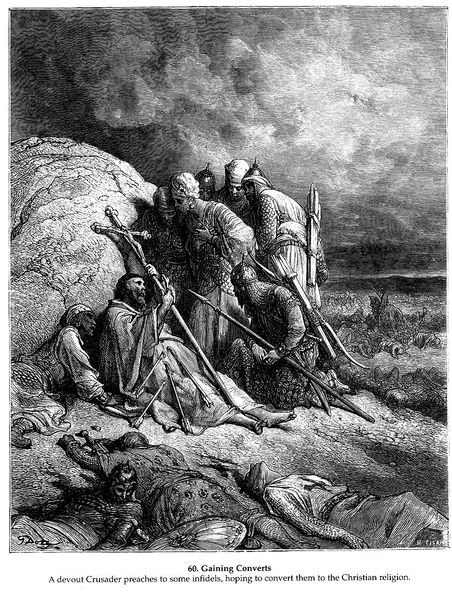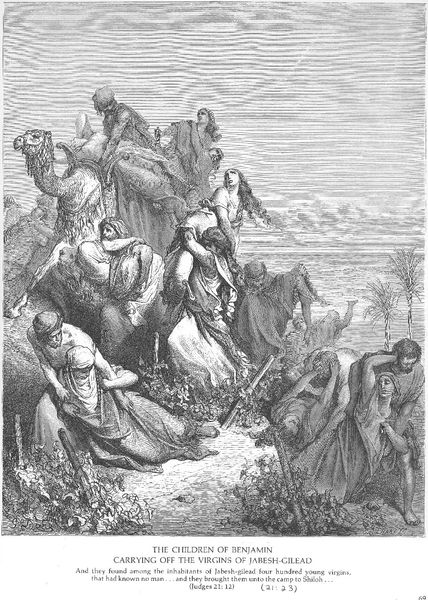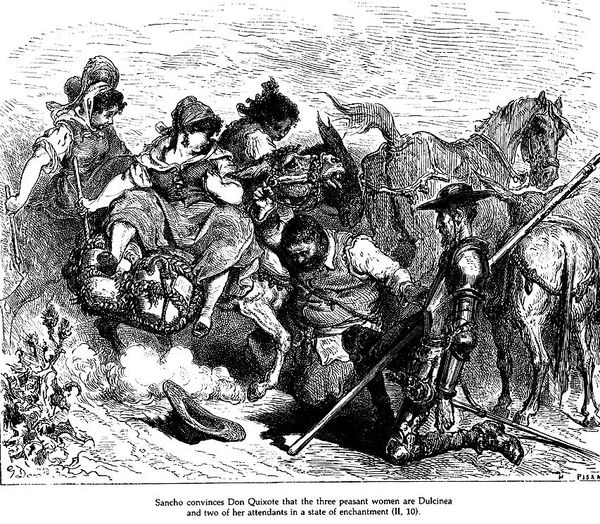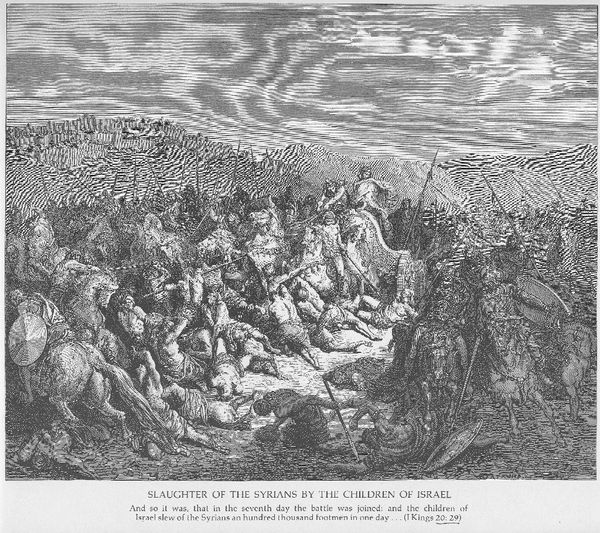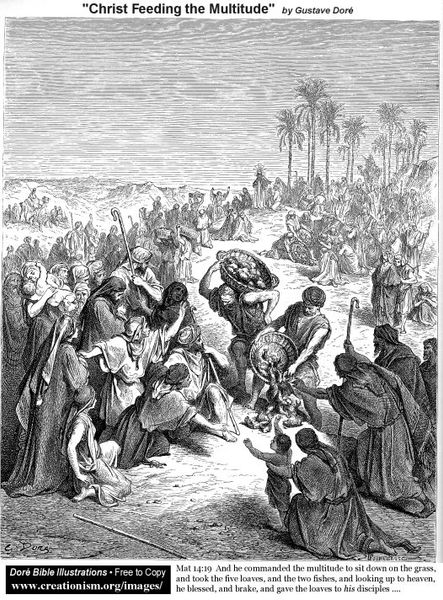
print, engraving
#
narrative-art
#
the-ancients
# print
#
landscape
#
figuration
#
jesus-christ
#
soldier
#
romanticism
#
christianity
#
genre-painting
#
history-painting
#
engraving
#
christ
Copyright: Public domain
Curator: What a dramatic scene. Gustave Doré's engraving, titled "The Arrival at Calvary," captures the somber procession leading Christ to his crucifixion. Editor: My first impression is one of overwhelming dread. The sheer weight of the cross, the oppressive crowd, it feels monumental and bleak, amplified by the stark monochrome printmaking. Curator: Indeed. Doré was a master of light and shadow, wasn’t he? And this is apparent with how his choices surrounding print media evoke such emotional intensity. But observe how he positions Christ in the work, almost crushed, reflecting perhaps upon how labor, religious institutions and Roman authoritarian power was consumed in this particular image. Editor: Absolutely. And the institutional history behind Doré's biblical illustrations is significant. They were hugely popular, widely circulated in books, impacting how generations visualized these narratives. Think about the societal role these images played in reinforcing religious and cultural values through his distinct approach to genre painting at the time. Curator: We see those cultural values being reinforced through the very physical production of the image as well. How many individual cuts, gouges, or movements were necessary in the engraving? How many prints were pulled from that very plate for distribution in popular media such as periodicals, newspapers, and books? These questions allow us to evaluate not only the spiritual, but material impact that Gustave’s work would come to possess on religious viewers, then, and now. Editor: The politics of imagery are so potent here. The way the Roman soldiers are depicted versus Christ – consider what Doré communicates to his largely Christian audience. What would that sort of image reinforce in viewers across socio-political and religious dimensions? And how would Doré leverage existing historical artistic visual motifs for contemporary political commentary at the time of production? Curator: That's such a great point to explore within the work! The weight and emotional affect this work is capable of demonstrating within audiences in 2024 truly testifies to his legacy! Editor: Ultimately, this piece reminds us of how art, particularly prints, can shape collective memory and cultural narratives through very clear means of material production!
Comments
No comments
Be the first to comment and join the conversation on the ultimate creative platform.
